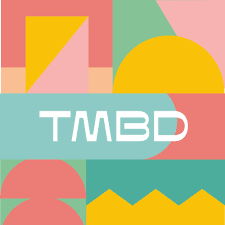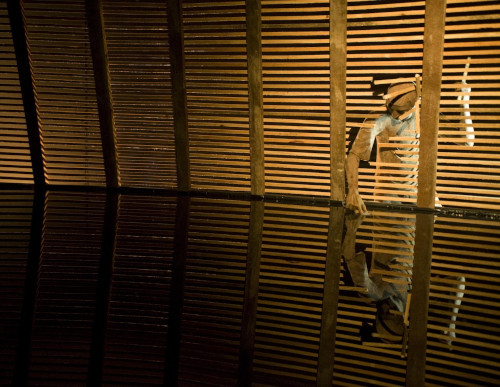
So I, a fascinated by black and white, that review myself in this aesthetic, I thought it would last forever, I find myself at a crossroads between the artistically challenged and commercially forced to shift to color. When I rail for this new language I try to found what I saw in black and white. The singularity, a fascination of mine and something that was not intended to mimic or reproduce what I saw, what others saw or tried to do, but wanted to create the possibility of metaphorical construction of what is photography. Step to color is non-naturalistic, because there is nothing in the picture that is natural and I think, as a practice and as an aid in the documentation it is not limited to this field. What I did in black and white was not strictly documentary had a base of observation, the conservation of tangible things and at the same time had a poetic component which I could not abdicate, so all my effort goes through this transition need to make this Poetry visible and discover that is not marketable also. Of course, like all people who make a very large investment to find anything and finally find it, is difficult to relinquish it. I walk forced in color, but I find that I am fascinated by it and the first time it happens is when I go to work the Panasqueira mines, thinking I would do with all that I knew about the iconography mines, based on human figure and manual labor. I've imagined myself shooting many sweaty men with dirty bodies naturally, in effort, in a shady place. After getting permission to enter, taking personal responsibility for any damage during the time I was in the mine, embark on this great adventure. I go along with the first round which is presented at five in the morning to go at six into the mine, because they need to equip themselves, organize, go through the office and I do the same route, had been warned previously that literally if I was not on time, I could not go to work. So, I was so worried I arrived at four in the morning, since it was housed about twenty miles, crossed the mountain in a scooter and when I got to the visible area of mining infrastructure, while there was a waiting period, I start to look back and realize that everything I had imagined of the mines was transfigured at night, the color had a very strong component. The first image was at the surface, was a mix of lunar landscape with Christmas ornaments. I looked at everything and did not recognize the face, the shape of the buildings and saw mostly things that I would never have seen during the day when I had been. I took some color pictures that I liked, but I always thought that what he was going on outside, had nothing to do with the interior.

There I am in the mine, after signing the liability waiver, accompanied by an engineer who would serve as a guide and the first thing I glimpse is a dim corridor to the point where we are forced to leave, and I duly equipped with boots bigger than my foot, I shoe 38, with a single pair of socks, which was a big mistake, because it was a course made of mud and water and that's when I realized that my feet would suffer in those big boots. Once I got out of the van look around and could not believe what I was seeing. Instead of seeing many men, there were only six who had come with me on the vehicle, instead of seeing a dark place, it was a place full of light, as opposed to a dull light, i.e., all light sources represented a similarly, I find that the colors inside the mine did not have the same valence, was a festival of shades that had the benefit of reflecting on the water and mud. Everything was aesthetically beautiful, completely different from what I had seen in terms of iconography mining and I surrendered. I realized that all the effort he had made in learning the mastery of color and light had served at least for anything.

This is the first observation that also in color I had my space, something that until then had never been clear, had done pictures of course, but had never looked at the color with the conviction that was what made sense and that I belonged. I explored the mine and never remember having looked at the camera once, because I was afraid of tripping and continued to walk into the bowels of the mountain. What I remember clearly at the end of the day, was how much it hurt your feet, only when to the boots off, checked after taking a pair of socks that had no name, my feet completely white and cooked, full of bubbles and then I realized sacrifice and effort I had made there. This is my first major milestone, the revelation of the unseen, not because it is not accessible to everyone, but because is not even part of our mental territory. Actually everything I can imagine, I can conceive possible shooting, if I cannot do this process, and I cannot photograph it. Inside the mine I saw the manifestation of a thing that was unimaginable. When I enter these photography territory things that to me were not possible before, did not exist, could not be experience, but also communicate, realize I got a plastic capacity, a new dimension in photography that goes beyond the visible and my ability to imagine. Suddenly I rediscover, what we thought dominated the twenties. After all, there are still many dimensions to address the use of color and this notion of the invisible, the unseen and that is not a space of everyday life.

From that moment on, I start photographing when anyone did photos, at night, or dawn and do a series of photographic sets that explore this component, photograph territories whom we do not attribute a valence of color. Once again we returned to good accidents of my life and the discovery of the idea of finding new dimensions in photography was undoubtedly remarkable, because it is cross, no matter how aesthetically things materialize, the most important is to realize that there are many options that are not visible and obvious, but there are, as in any language. This discovery is so powerful that we can do everything that we thought to be able to imagine. I leave pervaded with this spirit of finding in photography things that interest me greatly and I could not go back to back. I reached a point where, curiously I realized that what I was doing on the author photo, outside the documentary was very similar to what I did in the theater.

Throughout my life I found that everything was on the outside was still theater, i.e. I was not just seeing a new exploration of photography but was also revisit everything that I had built. When was photographing Marrakech and were several trips, the first observation I made is that the images I made on the street were identical to those I did on the stage, the rays of the sun and the light on the buildings allowed me to play with the clear and the dark shadow used as in the black box theater. So, I concluded that what was seen as a total revolution, a little conditioned yes, but it only arrived in this way and could have gotten up later by other circumstances, because what I was doing what I had always done, but with another different guise and with much greater depth. Because we produce images we do not became photographers. I like to give an example of deception and misunderstanding that exists around the picture that is; it is not because we wear a gown and placed a stethoscope around the neck that we became doctors. It means that in addition to the tools of the trade, there is a set of skills that enable us to do something. What makes me photographer is my ability to understand what I want in photography, his potential, his mastery of technique and his ability to be an accessible language for a group, but used singularly, i.e., there is a photo and then there is what I do and consciousness I found my space.

When then I started to build my look, my artistic career, the next step was to understand my position within those mechanisms and then was pure pleasure. What I have done in the last years of my life is actually playing in the most constructive and respectful of the word with the picture. It's my life, I wake and fall asleep thinking about it, I feel that there is an area that continues to be interesting and exciting, but how do I keep this challenge? First, realizing the inherent wrong characteristics of this language and amusing me even if I create visual objects that can devote to others. Photography is communication and if it was not so, it will stay in the imaginary, so I like to do it intelligently so that the experience of others is as exciting as mine.
I started by deconstructing many current ideas about photography. Namely, a set of biases which reduce its 1000 possibilities. Then I decided to explore the remaining 999, one at a time, first aiding me with technical devices through a focusing lens that allows me to an unconventional manner photo. A baby focus a tiny part of the picture and the rest remains blurred. What I create with it? The misconception of perception. All are convinced that what we perceive is what photographed, I'm convinced otherwise. The best way to prove it is the viewer who will say, I do not see it, but it is a photographic image therefore is not just about what I see, the picture can be based on anything that can be seen both as invisible.

Now I reached a point that my experience in photography is not just visual, but multisensory. For some time I dedicated myself to a laboratory of experimental photography, where we worked hard photography done by blind people, although that is not visual is also constructive. From the analysis of photographs made by the blind, I started thinking that we all despise the other senses in building an image but that surrounds us is multisensory, pictures can also be that, I do know how to create using all these possibilities and of course the easiest way to associate this concept, which aids the blind in creating a mental image, is the sound. All blind photographers said that the sound is almost as important as the visual image of an area and it is also photography. I challenge myself to link picture and sound, from the image, allowing it to be decoded into sound waves. The picture is based on the idea that memory is a materialization of a reliable experience. We all know that it is a dynamic process of reconstruction and of course what we have today remember is not the same as experienced twenty years from now, so why I cannot take that image and print the same dynamism that will have some time from now? I'm making a memory game, with the awareness of what it all means, the first phase is through software which decodes the image tones in musical tones and then I can have the freedom to act in one or another, according to the optimization of my memory so the connection works. And still going on 997...










